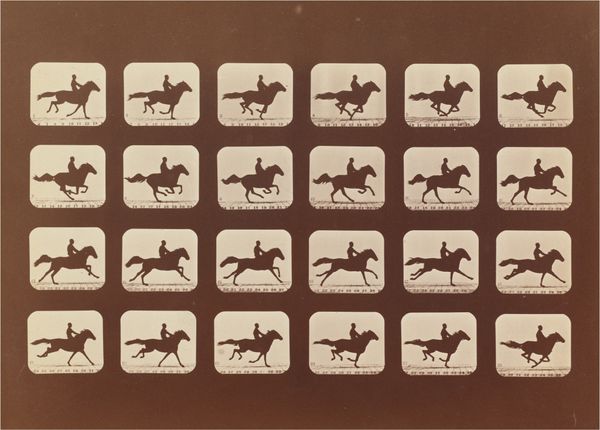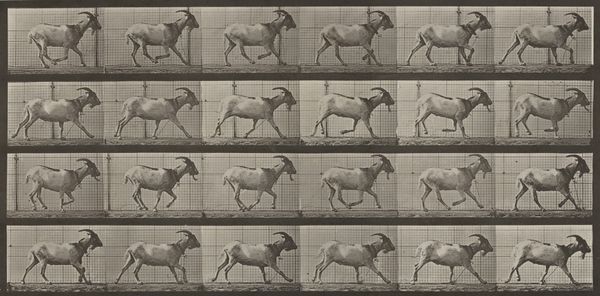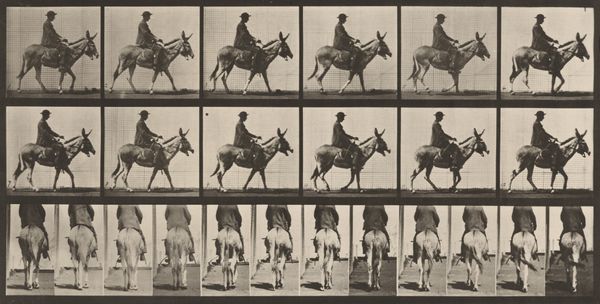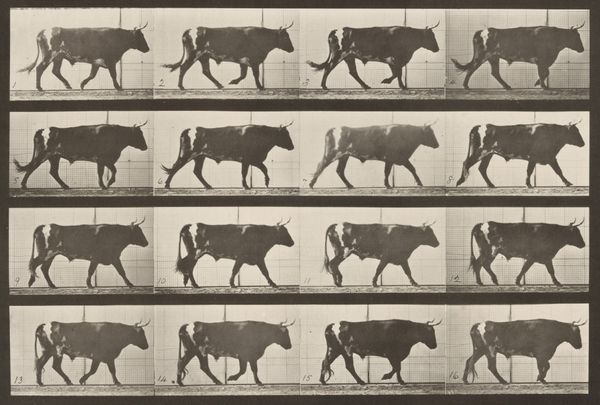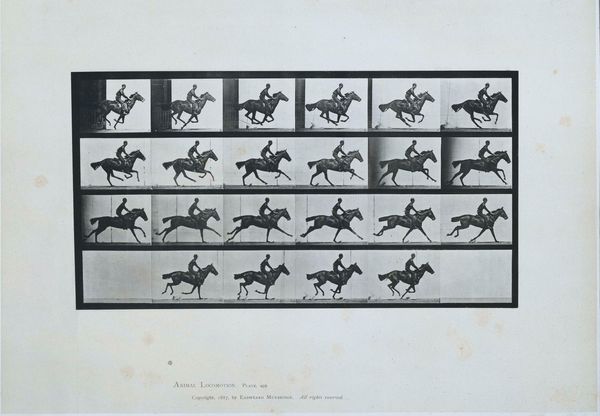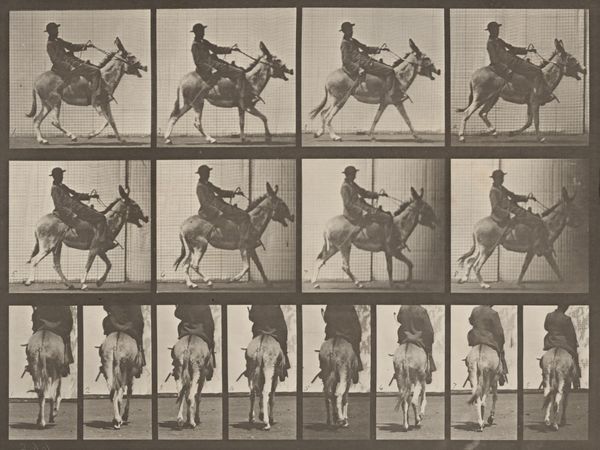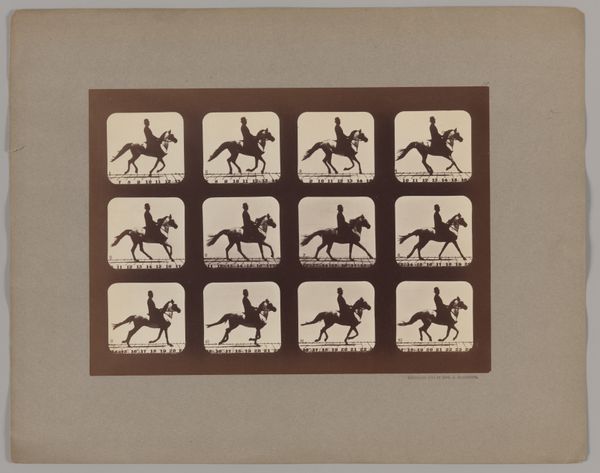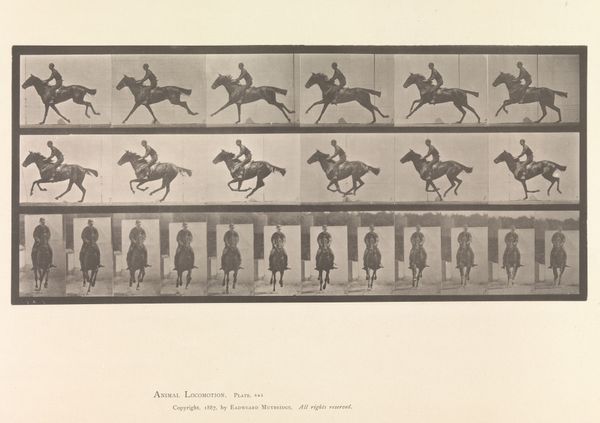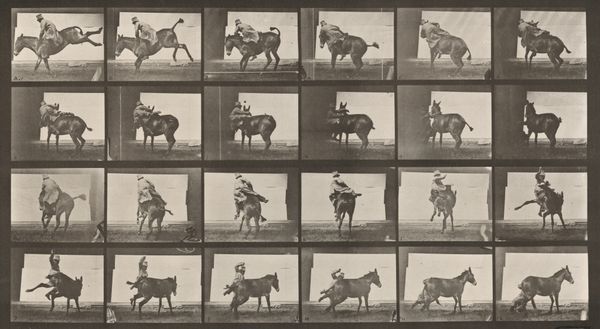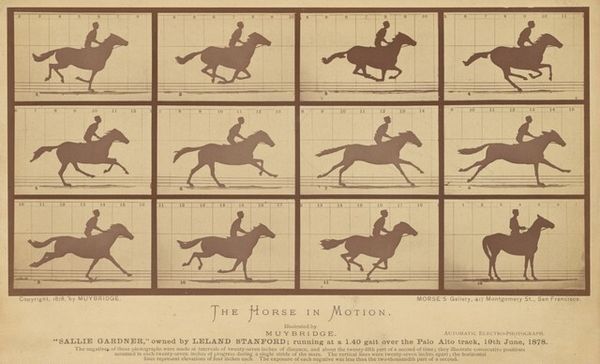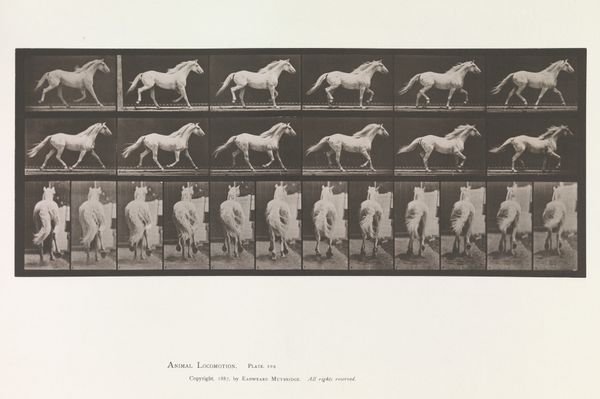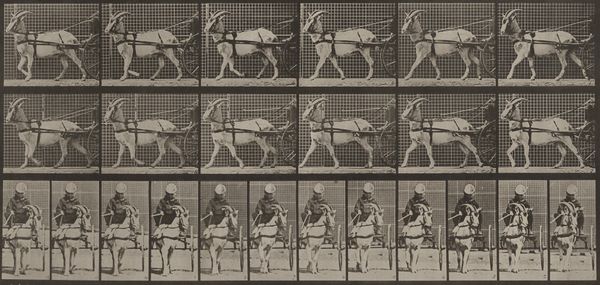
Plate Number 626. Gallop, thoroughbred bay mare, Annie G. 1887
0:00
0:00
print, photography, gelatin-silver-print
#
portrait
#
kinetic-art
#
animal
# print
#
photography
#
gelatin-silver-print
#
realism
Dimensions: image: 23.7 x 30.6 cm (9 5/16 x 12 1/16 in.) sheet: 48.3 x 61 cm (19 x 24 in.)
Copyright: National Gallery of Art: CC0 1.0
Editor: Here we have Eadweard Muybridge's "Plate Number 626. Gallop, thoroughbred bay mare, Annie G." made in 1887 using gelatin silver print. What strikes me immediately is how these sequential photographs capture something invisible to the naked eye. How do you interpret this work, focusing on its enduring impact? Curator: Indeed. What Muybridge unveiled was more than just a horse's gait; it was a shift in perception. Consider the cultural fascination with horses – symbols of power, freedom, and nobility. His work disrupted established artistic conventions, particularly regarding how horses were depicted in motion, challenging the public’s understanding and memory of such images. What do you make of that in terms of cultural memory? Editor: I guess it means he created an objective record that replaced idealized depictions with a more scientific approach, even though it still carries symbolic weight, right? I mean, horses galloping still conjure feelings of energy and wildness, regardless. Curator: Precisely. Muybridge tapped into a primal connection between humans and animals, but the image remains emotionally potent because the symbolism associated with horses is timeless. The sequential imagery underscores that even simple movement creates a wealth of information about change, time, and being. The photographs create an aggregate symbol with lasting emotional connotations that extend beyond simple animal locomotion. Editor: I never considered how much our inherent assumptions shape what we see. Seeing the real motion changed how we can see symbols. Curator: Exactly. By breaking down the gallop, Muybridge reassembled it, offering a potent reminder of how our brains perceive and process information in the context of cultural expectation. And perhaps most poignantly how seeing IS believing... until something comes along to prove us wrong! Editor: This has definitely changed my view of both Muybridge and photographic realism. Curator: Mine as well; the impact on both historical memory and psychological understanding of perception remains relevant and engaging today.
Comments
No comments
Be the first to comment and join the conversation on the ultimate creative platform.
